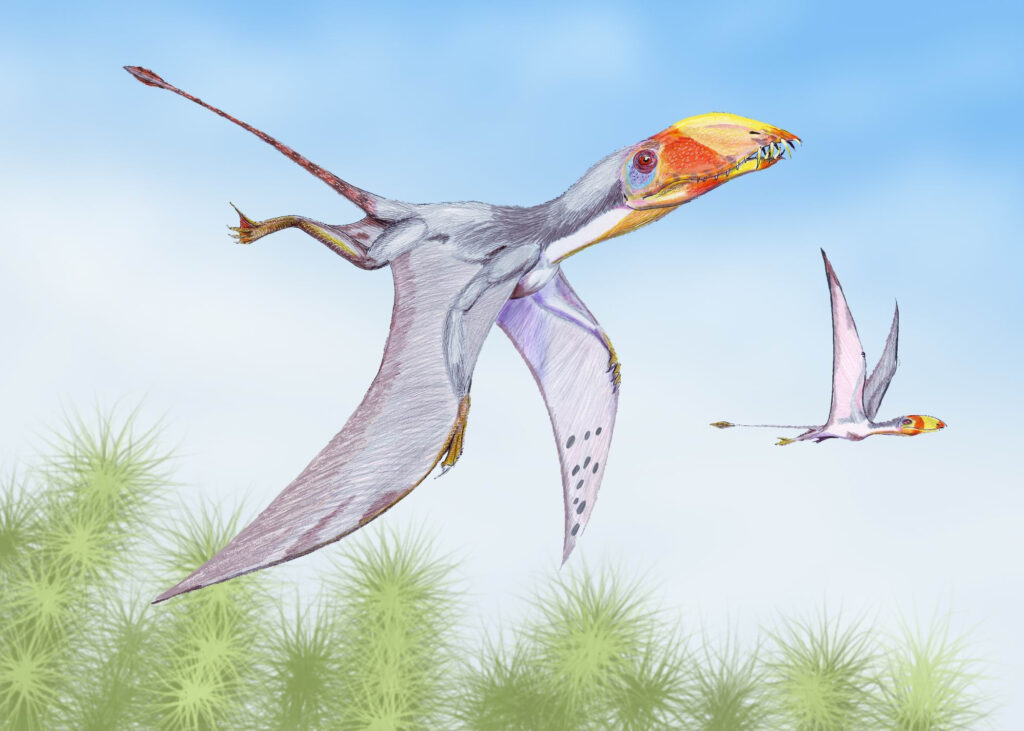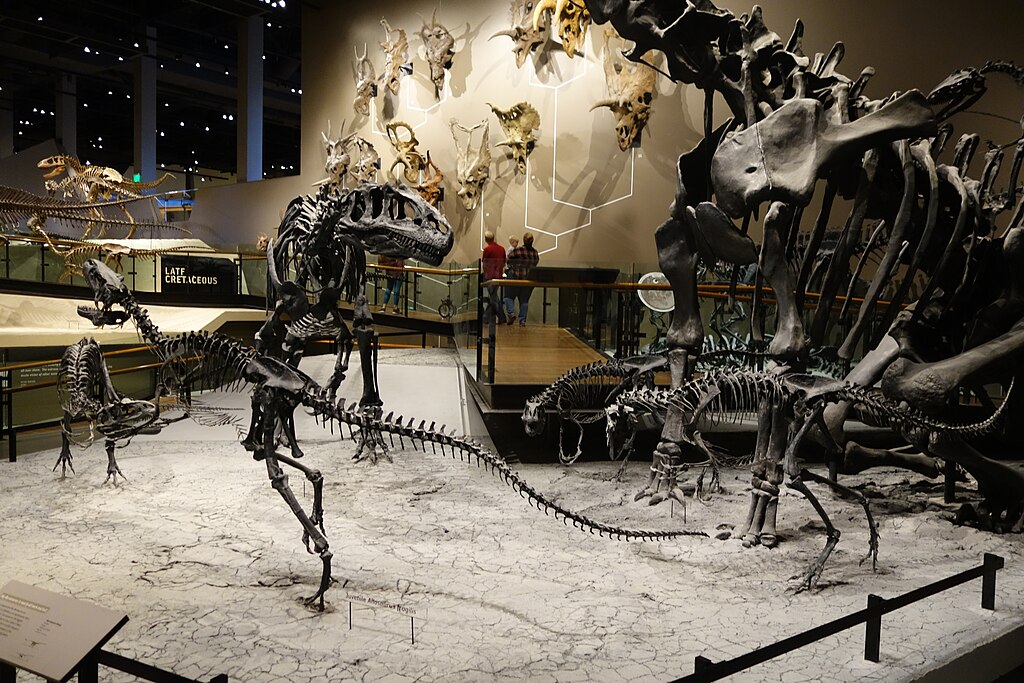When we picture the prehistoric world, many of us imagine pterodactyls soaring above herds of dinosaurs, perhaps even snatching smaller ones for meals. This popular image has been reinforced by countless movies, books, and museum displays showing these winged creatures alongside famous dinosaurs like Tyrannosaurus rex and Triceratops. However, the reality of prehistoric life is more nuanced than these simplified depictions suggest. While pterodactyls and dinosaurs did share the Earth for millions of years, their relationship wasn’t quite what many people think. Understanding the true relationship between these fascinating prehistoric creatures requires exploring their classification, evolutionary history, and the time periods they dominated.
Who Were the Pterodactyls?

The term “pterodactyl” is commonly used but scientifically imprecise. Paleontologists prefer the term pterosaurs, which refers to an entire order of flying reptiles that lived during the Mesozoic Era. Pterodactylus is actually just one genus within this diverse group, though its name has become a popular shorthand for all pterosaurs. These remarkable animals were the first vertebrates to evolve powered flight, predating birds by over 70 million years. With their hollow bones, large brains, and keeled sternums for flight muscle attachment, pterosaurs developed many adaptations convergent with birds, despite being an entirely different lineage. Their wings consisted of a membrane of skin stretched from an enormously elongated fourth finger to their legs, creating a structure unlike anything alive today.
What Makes a Dinosaur a Dinosaur?

To understand the relationship between pterosaurs and dinosaurs, we must first clarify what constitutes a dinosaur in scientific terms. Dinosaurs are defined by specific anatomical features, including a hole in the hip socket and legs positioned directly beneath the body, allowing for an upright stance. They belong to the clade Dinosauria, which is divided into two major groups: Ornithischia (bird-hipped dinosaurs like Stegosaurus) and Saurischia (lizard-hipped dinosaurs, including Tyrannosaurus and the ancestors of birds). Despite their reptilian nature and often massive size, dinosaurs represent a specific evolutionary lineage with unique adaptations. Modern birds are considered avian dinosaurs, the only dinosaur lineage to survive the mass extinction event 66 million years ago, making them living dinosaurs in a very real scientific sense.
The Archosaur Connection
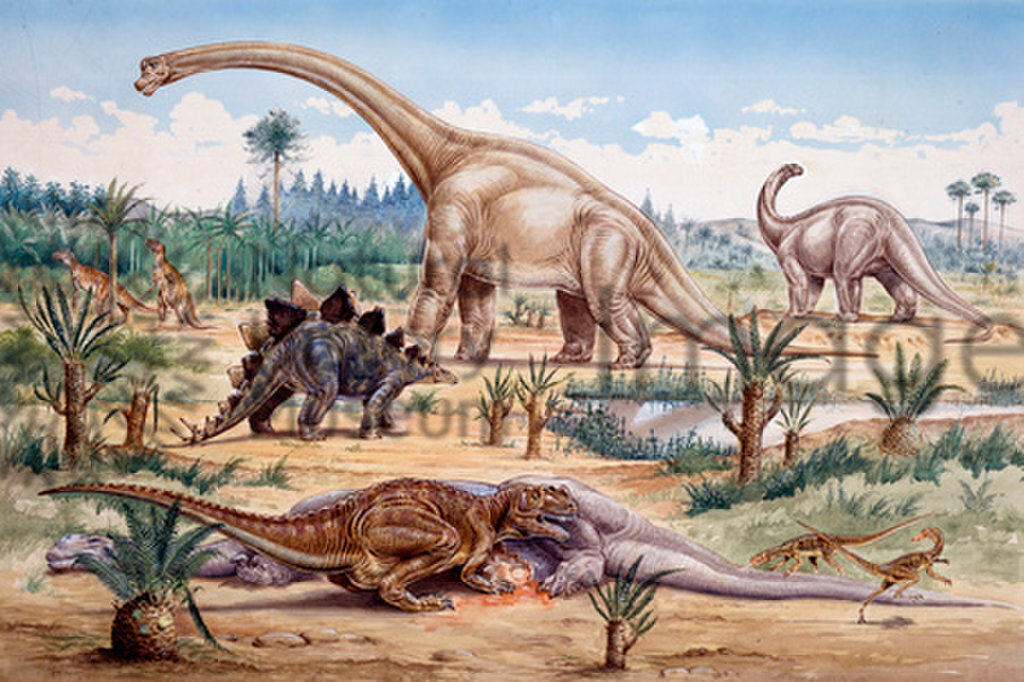
While pterosaurs were not dinosaurs, they were closely related. Both groups belong to a larger classification called Archosauria, the “ruling reptiles,” which also includes crocodiles and their ancestors. Archosaurs diversified extensively during the Triassic period, with different lineages adapting to various ecological niches. Pterosaurs and dinosaurs shared a common archosaur ancestor but evolved along separate evolutionary paths approximately 245 million years ago. Their shared ancestry explains certain similarities in physical characteristics, including aspects of their skull structure and reproductive biology. This connection makes pterosaurs the closest relatives to dinosaurs outside of Dinosauria itself, illustrating why they’re often linked in public perception despite being distinct taxonomic groups.
The Rise of Pterosaurs

Pterosaurs first appeared in the fossil record during the Late Triassic period, approximately 228 million years ago, though their origins likely extend slightly earlier. The earliest known pterosaur fossils, such as Eudimorphodon from northern Italy, already show fully developed wings, suggesting that the earliest stages of pterosaur evolution remain undiscovered. These early pterosaurs were relatively small, with wingspans typically less than two meters, and had dentition suggesting varied diets including fish, insects, and small vertebrates. They quickly diversified and spread globally, adapting to numerous ecological niches in the skies of the Mesozoic. By the Jurassic period, pterosaurs had become highly specialized aerial predators, demonstrating the success of their unique evolutionary adaptations for flight.
Coexistence Through the Mesozoic
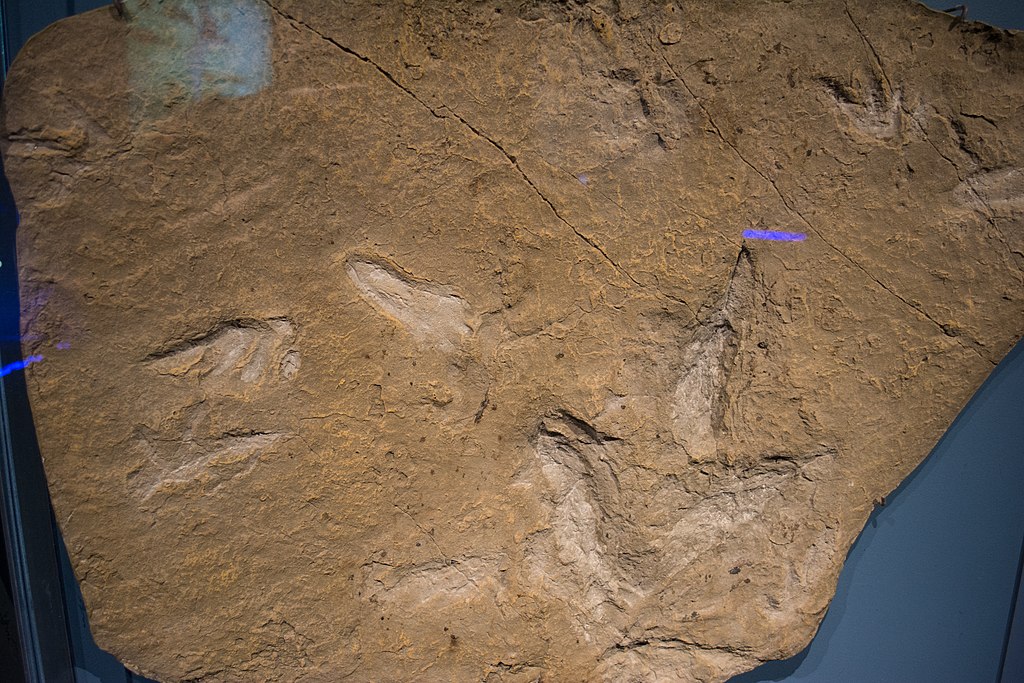
Pterosaurs and dinosaurs did indeed share the Earth for over 160 million years, spanning the Late Triassic, Jurassic, and Cretaceous periods. During this extended coexistence, both groups underwent significant evolutionary changes and diversification. Early in the Mesozoic, dinosaurs were often smaller and less dominant, with many other reptile groups competing for terrestrial niches. As dinosaurs expanded their ecological roles, pterosaurs continued their dominance of the skies, with the two groups rarely competing directly due to their different adaptations and ecological niches. This partnership of sorts allowed both groups to thrive simultaneously, each exploiting different aspects of the Mesozoic ecosystems. The fossil record shows numerous sites where dinosaur and pterosaur remains are found together, confirming their contemporaneous existence.
Pterodactylus: The Namesake of Confusion
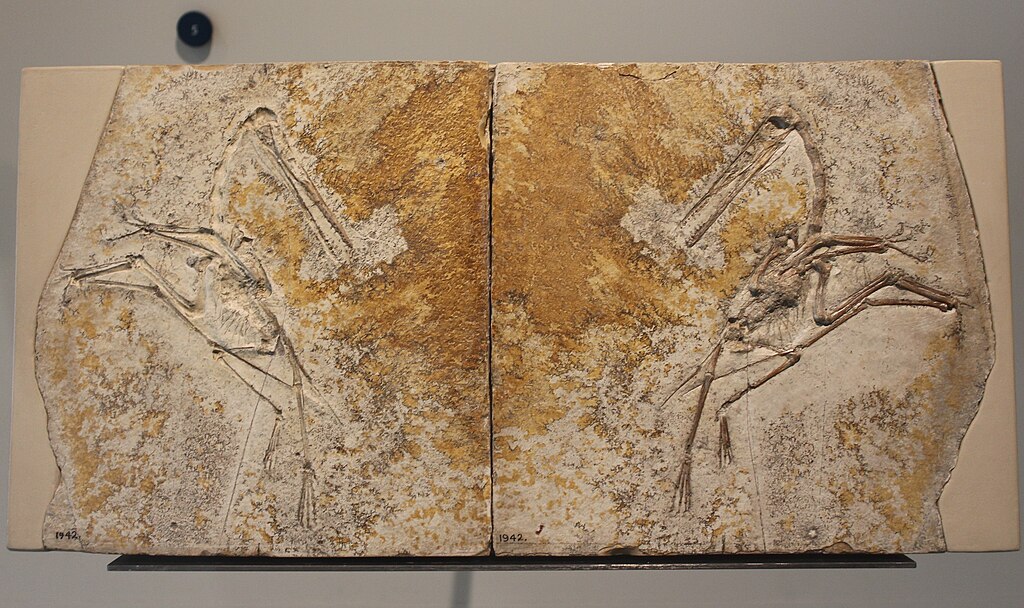
Pterodactylus antiquus, discovered in the late 18th century, was the first pterosaur ever described scientifically, lending its name to the popular conception of all pterosaurs. This crow-sized flying reptile lived during the Late Jurassic period (approximately 150-148 million years ago) in what is now Germany. With a wingspan of about 1.5 meters, it was a relatively modest-sized pterosaur with a distinctive head crest and elongated fourth finger supporting its wing membrane. Pterodactylus coexisted with famous dinosaurs of the Jurassic, including Allosaurus, Stegosaurus, and various sauropods, though not in the same geographic locations where its fossils have been found. The excellent preservation of Pterodactylus specimens in the fine-grained limestone deposits of Bavaria has provided paleontologists with detailed information about pterosaur anatomy.
The Giants of the Cretaceous Skies
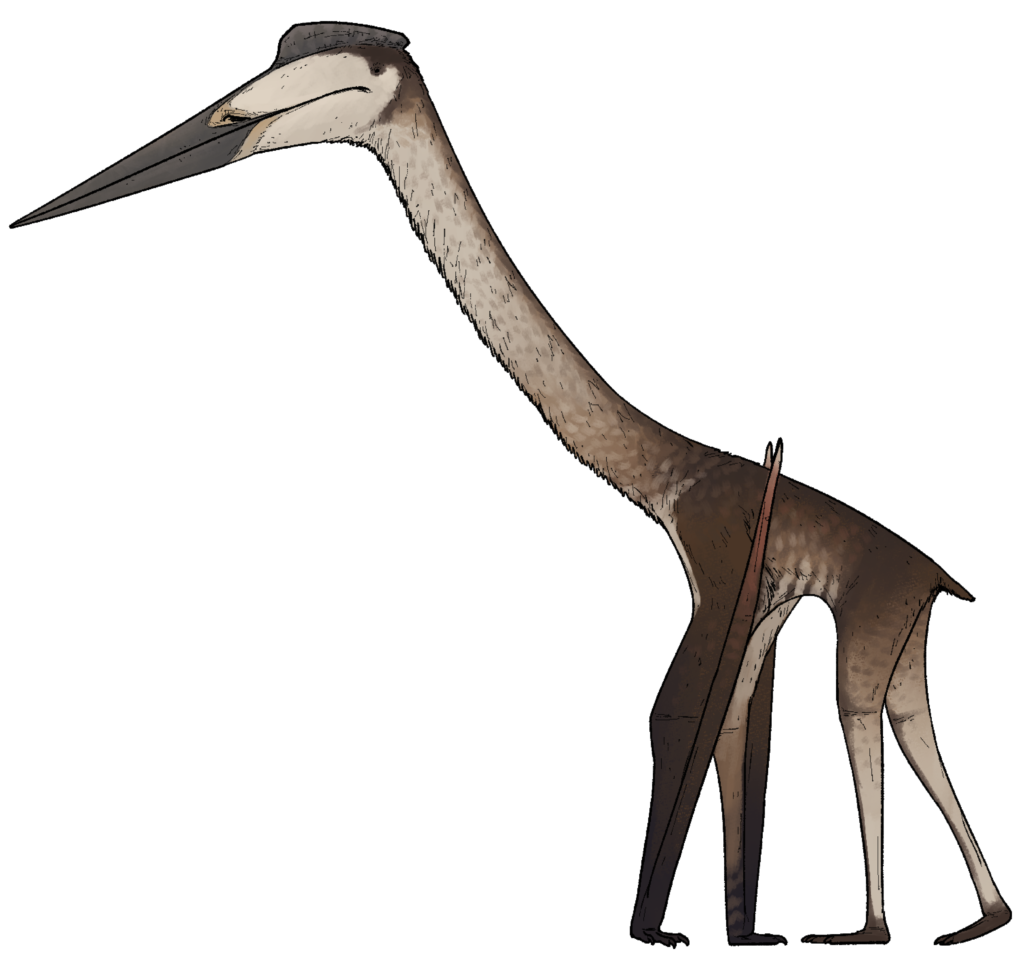
While early pterosaurs were relatively modest in size, the Cretaceous period saw the evolution of truly gigantic forms that pushed the boundaries of powered flight. The most spectacular of these was Quetzalcoatlus northropi, named after the Aztec feathered serpent god, which reached an estimated wingspan of 10-11 meters – making it the size of a small airplane. Another enormous pterosaur, Hatzegopteryx, may have been even more massive, with a shorter wingspan but heavier build, possibly weighing over 200 kilograms. These azhdarchid pterosaurs were contemporary with famous late Cretaceous dinosaurs like Tyrannosaurus rex and Triceratops. Their massive size represents the upper limits of animal-powered flight, achieved through highly pneumatized bones, efficient respiratory systems, and specialized launch mechanisms that allowed these enormous creatures to take to the air despite their size.
Ecological Relationships: Predator, Prey, and Competition
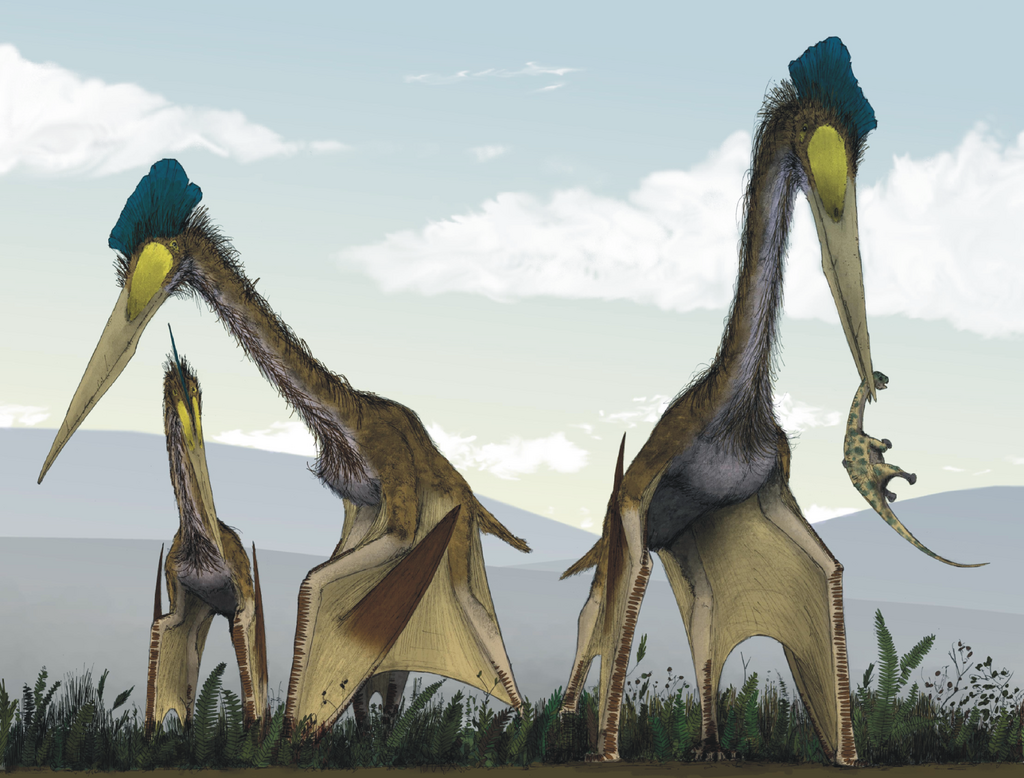
The relationship between pterosaurs and dinosaurs in Mesozoic ecosystems was complex and varied across time and space. While some smaller pterosaurs may have occasionally been preyed upon by carnivorous dinosaurs, most interactions were likely indirect through competition for resources or mutual avoidance. Certain specialized pterosaurs, particularly the large azhdarchids of the late Cretaceous, may have occasionally preyed on dinosaur hatchlings or very small dinosaur species. Fossil evidence suggests pterosaurs occupied diverse ecological niches, from fish-eaters to filter-feeders to terrestrial stalkers, minimizing direct competition with dinosaurs. The two groups likely influenced each other’s evolution indirectly through their roles in shared ecosystems, with each adapting to different aspects of the environment.
The Popular Culture Misconception
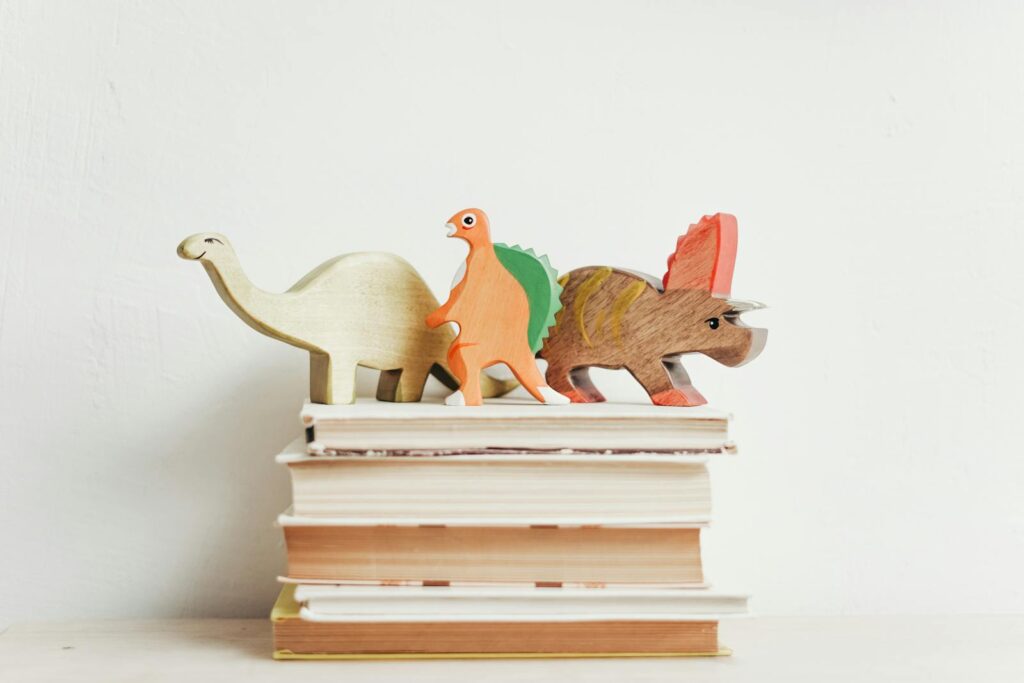
The common misconception that pterodactyls were flying dinosaurs has been perpetuated through decades of popular media, from early natural history illustrations to modern movies like Jurassic Park. This misunderstanding stems partly from the early days of paleontology when the relationships between prehistoric reptiles were poorly understood. Even today, museum displays sometimes place pterosaur models alongside dinosaur exhibits without clear explanation of their distinct evolutionary relationships. Children’s books and toys frequently label pterosaurs as dinosaurs, further cementing this misconception in public consciousness. The dramatic appearance of pterosaurs, with their leathery wings and often crested heads, makes them visually compelling additions to prehistoric scenes, encouraging their inclusion in dinosaur-themed media regardless of scientific accuracy.
The End of the Pterosaur Era

The reign of pterosaurs came to an abrupt end at the same time as the non-avian dinosaurs, during the Cretaceous-Paleogene (K-Pg) extinction event approximately 66 million years ago. This catastrophic mass extinction, triggered primarily by an asteroid impact in what is now the Yucatán Peninsula of Mexico, eliminated approximately 75% of all species on Earth. The pterosaurs, despite their 160 million years of evolutionary success, left no descendants. Unlike dinosaurs, which continue today as birds, pterosaurs represent a completely extinct branch of the reptile family tree. Their highly specialized adaptations for flight may have made pterosaurs particularly vulnerable to the environmental upheavals following the asteroid impact, including atmospheric dust, reduced sunlight, cooling temperatures, and collapsed food webs.
Filling the Ecological Void

Following the extinction of pterosaurs, their ecological niches as large flying vertebrates did not remain vacant for long. Birds, which had already been diversifying for over 80 million years alongside pterosaurs, survived the extinction event and underwent an adaptive radiation in the Paleogene period. Many modern bird groups evolved to fill roles previously occupied by pterosaurs, from coastal fish-eaters to soaring aerial predators. Much later, during the Oligocene epoch, another group of vertebrates independently evolved powered flight and large size – the ancestors of bats. In South America, terror birds (phorusrhacids) evolved into large flightless predators, partially filling ecological niches left by both pterosaurs and carnivorous dinosaurs. Nature’s tendency to fill available ecological niches demonstrates the evolutionary principle that successful adaptations often evolve multiple times independently.
Modern Scientific Understanding

Contemporary paleontological research continues to refine our understanding of pterosaurs and their relationship to dinosaurs. Advanced techniques, including CT scanning, 3D modeling, and biomechanical analysis, have revealed new insights into pterosaur flight capabilities, growth patterns, and ecological adaptations. The discovery of pterosaur eggs and embryos has provided unprecedented information about their reproductive biology and development. Fossil beds in Brazil, China, and other locations continue to yield new pterosaur species, with over 200 currently described. Genetic studies of living archosaurs (birds and crocodilians) help scientists reconstruct the evolutionary relationships among extinct groups. While pterosaurs and dinosaurs remain distinct lineages, their shared archosaur heritage and concurrent evolution through the Mesozoic make them fascinating subjects for comparative study.
Conclusion: Related but Distinct

So, did pterodactyls live with dinosaurs? Yes, pterosaurs (including the genus Pterodactylus) coexisted with dinosaurs throughout most of the Mesozoic Era, sharing the same world for over 160 million years before both groups were largely wiped out in the same extinction event. However, pterosaurs were not flying dinosaurs – they represent a separate and distinct branch of reptile evolution that developed powered flight independently. Both groups descended from archosaur ancestors but followed different evolutionary paths to success in the Mesozoic world. Understanding this distinction enriches rather than diminishes our appreciation for the diversity of prehistoric life. The next time you see a dramatic illustration of pterosaurs flying above grazing dinosaurs, you’ll know that while the scene depicts contemporaries sharing an ancient ecosystem, it portrays two separate branches on the magnificent tree of life, each remarkable in its own right.

